Vellum Venom: 1986 Hyundai Excel

Sometimes designers become super stars in the car biz: just ask that dude who made the Ford GT, or the other dude responsible for the Chrysler 300. I am sure both made other vehicles which they truly hated. Perhaps the 300’s designer shares some amount of blame for the last Chrysler Sebring? I am sure that Ital Design’s Giorgetto Giugiaro has the same problem, but Hyundai wrote him a check and he made it happen. Quite honestly, the original Hyundai Excel here in the USA wasn’t a bad car at all. Bad looking, that is.
And honestly, after walking around this example at a historically savvy Hyundai dealer (next to a Lamborghini Dealership that bored me after 20 minutes) I suggest to you, dear reader, that the Excel sold so unbelievably well on both price and design. Because this machine could look much, much worse.
Boring and Boxy? Yes, but the Excel is also very clean and well-integrated, when you consider the design confines of a low asking price.
Note how the signal lights are cleanly and very deeply sunken, instead of screwed on top. There’s an overabundance of parallel lines, which shows a bit of “big picture” thinking by a wise design team. And every seam and cut line is remarkably well placed. Today’s cars could learn A LOT from the Excel.
The grille is the Excel’s best work: the one piece black plastic affair elegantly stores an emblem, headlights and is a natural extension of the parallel lines in the bumper and the slight curvature of the signal lense. And the grille ends at the same point where the hood and fender meet. It may not have Italian flair, but someone sweated the details…on a tight budget.
You can see the harmonious lines here. You can also see the less than perfect panel gaps and the tacked on side marker light, but this is anything but offensive to someone in dire need of cheap wheels.
When is the last time you saw a car that the hood, fender and lighting pods began and ended so logically? Even the grille’s modest and purposeful slats just makes sense ( get it?) on this face. If Hyundai installed flush fitting headlamps in 1986, this Excel would look like a proper 1970s concept car from damn near any high dollar design firm. Which is a compliment, of a very high order.
Too bad the white lense couldn’t wrap around juuust a little more. This would extend the grille’s curvature and make the Excel look a little less static. Then again, this is a very static and boxy design from any angle outside of the grille, so perhaps Ital Design was on to something.
Once again, note the purposeful and super cheap signal lights. Something about them screams “honest” like no car can today.
The hood crease doesn’t line up with a natural place in the grille, rather it comes from a place inside the headlights. This probably keeps the Excel from looking like it was designed using a T-square at every angle…probably a good move by the Italians.
A tiny cowl with a similarly small dashboard. Does it look cheap, or do you wish history could repeat itself? Honestly, I don’t know the right answer.
Note the lack of DLO fail: the fender and A-pillar meet in such a logical manner. If only modern cars could replicate this. That would mean abandoning today’s truck like nose swooping back to a wanna-be sports car greenhouse. The Excel has a small nose and plenty of tall and upright glass. It’s almost impossible to mess this one up.
Another shocker: wrap around door pillars on a Hyundai Excel? This bit of 1980s aerodynamic kit was available on a car this cheap? Surely this door was far more expensive to pop off compared to a Yugo portal!
No, I am not pointing at the stain. The crease in the fender turns into a large fold after it crosses the mirror. This fold becomes a very important part of the Excel’s profile. While the transition is far from organic, it works.
Another fold in the sheet metal. This not only gives the Excel a bit of negative area to break up the (still) very boxy side, it also makes for a logical place to insert some door guards.
More importantly, they put that guard on the fender? That’s not a cheap item for such a cheap car. Put it this way: the Ford Crown Victoria had this bit of plastic from 1992 until the mid-2000s, which Ford decided to thrift it out and let the fenders not match the doors. Nice job Hyundai, you had something to prove while Ford had something to slowly kill for no good reason.
I can’t adequately explain why, but the rubber and chrome guards on this Excel integrate well with the door handles. It says “cheap, yet cheerful.” I also like how the side view mirror is by no means an afterthought…even if the wheels and signal lights need a lot of help.
One reason this Excel is in such good shape is because it sits underneath an awning, with an annoying pole right in the middle! Luckily the B&B will fix it for me using some madtite photoshop skillz.
That problem resolved, there’s nothing wrong with the Excel from this angle. It’s the classic “three box” design for a sedan. But the fender crease turns into a big crease under the door’s glass, and quickly merges with the rear door’s vent window. The lower trim isn’t out of place. The C-pillar is almost fast, yet there is so much greenhouse you are guaranteed not to feel claustrophobic in this machine.
Okay, maybe that last bit was going over the top. No matter, this isn’t a bad piece of work for an Italian design firm. Not great, but certainly not bad.
The urge to grab a Testor’s paint marker (flat black, ‘natch) and remedy this odd showing of bling was tough to overcome. Because it does detract from the smooth B-pillar, and the gentle (but present) use of wrap around door pillars. Not a cheap bit of stamping for a super cheap car.
The greenhouse is gigantic on this Hyundai! It’s hard to dislike this angle when you consider every car looks like a submarine these days, but 1980s econoboxes looked cheap for a reason…and this is it.
Still, I love how the door cutline follows the natural line of the wheel well, then goes up and “back” to shadow the curve of the C-pillar. And no stupid black plastic triangle!
Oh crap, I’m starting to like this shitty little car.
The steel wheels are plain but somewhat easy on the eyes. Someone bothered to put a flat plane around each vent hole, and they have a nice “dish” to the rim like most rims from this era. The center cap is clean and modern, if a bit oversized for a car this size.
A locking gas cap? I am not entirely sure of this Excel’s trim level (it was repainted and debadged and I’m not buying a brochure on eBay to verify) but this highline model has a nice touch that you never see anymore. For good reason? Perhaps, but this is another “honest” design element that I can appreciate.
Just like the front, but red. And it’s poor, but very honest!
The rear window matches the C-pillar’s angle quite well. And there’s a slight amount of tumblehome, which looks out of proportion with the door’s relative straightness. Dare I say it, can someone chop the roof down so it won’t overpower the doors?
Nah, I take that back. This makes up for all the Chrysler 300s I’ve seen this past year. It’s refreshing, dammit!
Most of its Japanese and American competition had nicer side contouring, but they were all much more expensive.
Whoa dude, check out the logical trunk cut line, just like the hood! The current Hyundai Elantra could learn a thing or two from its Excel forefather.
I like the hard bend to quickly and definitively transition from the C-pillar to the back of the roof. Even more important, there’s another hard bend that accentuates the wrap around doors. How much did this car cost when new?
Since I couldn’t get a decent shot of “my” Excel, this factory shot shows off the roof’s hard bend and the creases in the side. You didn’t think the Excel could make the shadows dance with the light, did ya? Another thing you will see (in brutal detail) is the pure and functional design of the tail lights. Simply put, they blend very well with the design.
More excellent usage of parallel lines. The tail lights wrap around the quarter panel fairly nicely. There are several bends that keep the boxy trunk and bumpers from looking like (just like the photo of the hood crease) the Hyundai Excel was designed using a T-square. That’s proved further by the negative area on the bumper and between the taillights. Even the trunk lock/handle is well thought out…at this asking price.
A gigantic wart of a lighting pod with exposed screws. Cheap, but who cares? The Excel is now a museum piece. It shows how things used to be done, and how lucky we are today!
Every line is in its right place, if only the trunk’s panel gaps were consistent. And is it just me, or are those tail lights a little on the Ferrari Testarossa side?
A ribbed, staggered tail light profile? Don’t look now, but every Mercedes from the 1980s is blushing!
I swiped this photo (credit given) since I couldn’t get this far away from my example. The Excel is boxy and chunky (never mind that aftermarket spoiler) but there’s no shame in being a cheap but purposefully designed three-box sedan.
This model came with the luggage rack, which is now mostly missing. Not surprisingly, it doesn’t detract from the mystique of the Hyundai Excel.
Even their license plate graphics conveys the unabashedly cheap demeanor of the Excel. Very kitch, but the trunk lock/handle is definitely a cool bit of cheap car design.
Unlike so many modern cars that chrome out this feature in hopes of looking larger than life, the Excel’s exhaust pipe doesn’t overpromise. Honesty is a good thing, in this case: the motor never really delivered for the Amercian market. Oh well! Goodbye dear Hyundai Excel, I learned much from your logical Italian design. And I hope you did too.
Thank you all for reading, have a great weekend!

More by Sajeev Mehta
Latest Car Reviews
Read moreLatest Product Reviews
Read moreRecent Comments
- Varezhka Maybe the volume was not big enough to really matter anyways, but losing a “passenger car” for a mostly “light truck” line-up should help Subaru with their CAFE numbers too.
- Varezhka For this category my car of choice would be the CX-50. But between the two cars listed I’d select the RAV4 over CR-V. I’ve always preferred NA over small turbos and for hybrids THS’ longer history shows in its refinement.
- AZFelix I would suggest a variation on the 'fcuk, marry, kill' game using 'track, buy, lease' with three similar automotive selections.
- Formula m For the gas versions I like the Honda CRV. Haven’t driven the hybrids yet.
- SCE to AUX All that lift makes for an easy rollover of your $70k truck.





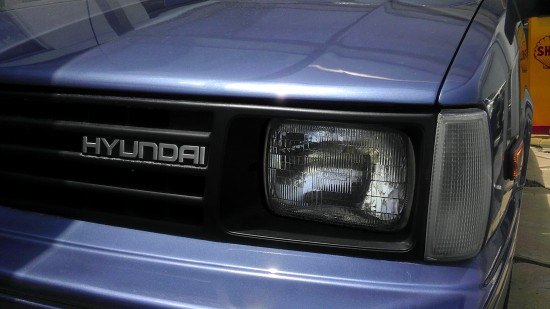









































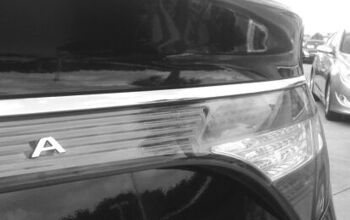
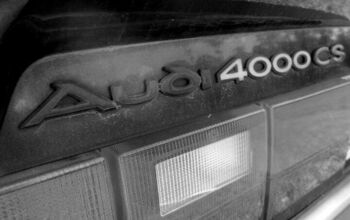
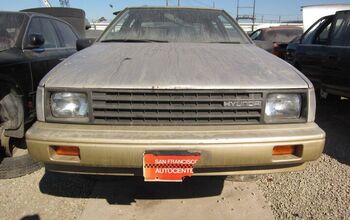



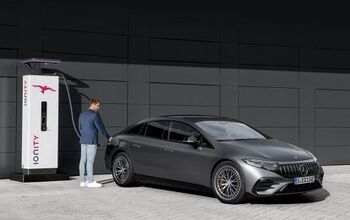










Comments
Join the conversation
Its great looking, and proof that you can make a small inexpensive car without it having to look like an Anime character.
I find it hard to believe Sajeev, that you made it an entire article on the Excel without ever mentioning its most celebrity moment of going over 100 mph in a high speed LA car chase with Rodney King at the wheel.